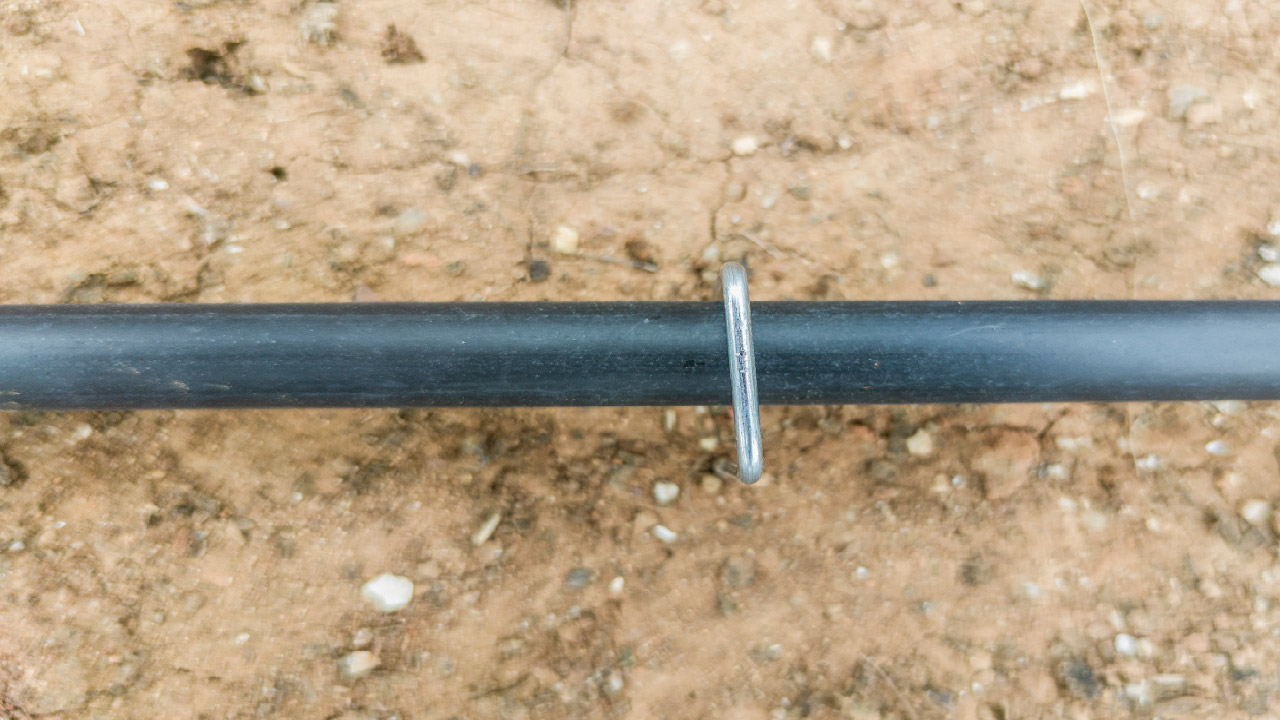Stainless Steel vs Non-Stainless Steel Hold Downs
Jan 20th 2025
Hold downs, also known as fabric, pins, staples, or spikes, are used to keep the irrigation system's tubing fixed in the desired place. They prevent the tubing from moving accidentally due to external factors like wind, high water pressure within the tubing, and gardening activities. Hold-down stakes are considered the finishing touch for the irrigation project. These staples serve as an anchor that keeps your irrigation system in its form.
Hold-downs are available in stainless steel and non-stainless-steel materials, offering numerous benefits to irrigation systems. These stakes can increase the system's efficiency and protect the irrigation components from damage. Let's compare galvanized vs. non-galvanized hold-downs and discover the types and applications of these tubing stakes.
Stainless Steel and Non-Stainless Hold Downs
Hold-down stakes are usually made of metals: stainless steel and non-stainless steel. Plastic hold-downs can break down when exposed to UV rays. Stainless steel and non-stainless steel hold-downs differ in their durability, corrosion resistance, and maintenance.
Here's the comparison of both metals.
Stainless Steel Hold Downs
Stainless steel hold downs, also known as landscape staples, are more durable, low-maintenance, and rust-resistant. These are steel pins used to hold down landscape fabric, pipes, fake grass, or anything that needs to be secured to soil.
Non-Stainless Hold Downs
Galvanized hold-downs are heavy-duty staples made from galvanized iron, which makes them strong and durable. Stainless steel's chromium content makes it more resistant to corrosion than galvanized steel, which is coated with a layer of zinc that can wear down over time. Unfortunately, corrosion is unavoidable in irrigation system projects. Rust is not always harmful to plants, but it can be bad for humans and pets.
Rust
Stainless steel hold downs are more resistant to rust and corrosion than non-stainless ones. The former does not corrode or stain when exposed to water.
Strength
Tubing stakes made of stainless steel are stronger, more durable, and longer lasting. They can be used for years to come.
Cost
When comparing the cost of both metals, you should know that galvanized steel and stainless steel hold-downs are reusable for many years. If you don't need stakes for drip irrigation, they can also be used for other purposes. Some non-irrigation applications include securing artificial turfs, pinning down landscape fabric, securing perimeter wire, and securing dog fences.
U-shaped Hold Downs
U-shaped stakes provide the easiest way to secure tubing or trip tape in place. Our U-shaped wire hold downs work well with ½ tubing and ¾ tubing. You only need to push these stakes into the ground. The hold downs have pointed blades, making installing them easier on hard ground.
J-Shaped Hold Downs
J-shaped hold-downs with round tops are commonly used to hold tubing, drip tape, or pipe. Square-top J stakes are used to secure landscape fabric. Galvanized J-shaped wire hold-downs available at DripWorks are simple to use and work well in all types of soil conditions. Their pointed ends make them easier to press in hard soil.
Tip: 6" tubing staples will work well for most soil conditions. Use longer hold downs in looser soils to ensure the drip tubing won't move after installation.
Tubing Clamps with Nails
Tubing clamps are unlike the above hold-down stakes but serve the same function by holding the tubing in place. These clamps have stainless steel nails that secure the tubing to the wall structure, wooden surface, railing, fence, or any landscape feature. Tubing clamps help maintain a neat appearance of your landscape and hold the tubing in place so it can reach elevated window boxes and hanging baskets.
Uses of Hold Downs
Stainless steel hold downs take longer to rust so that they can be used for various applications. Below are some common applications for hold-down stakes.
Secure Tubing
The most common use of hold-down stakes is to securely hold tubing and drip lines. Without these hold-downs, the tubing can move when it comes under pressure, which can cause it to move away from plants that need irrigation. One tubing stake every 1' is enough in sandy soil. One stake every 5' may be sufficient for rocky or clay soils.
Elevate Emitters
Support Stakes are used to raise emitters or sprayers above the ground. This keeps emitters from getting clogged by laying in soil. Additionally, it helps sprayers or micro sprinklers spray water at a greater diameter.
Pin Down Landscape Fabric
U-shaped and square-top hold downs are great for securing landscape fabric. The two sharpened prongs pierce the fabric without creating a large hole. These stakes keep the fabric in place without causing any damage
Tip: Use the rubber mallet and wear gloves to install hold-downs.
Buy High-quality Hold Downs at DripWorks
From irrigation hold-downs to clamps and trellis hangers, we carry hold downs for a wide range of installations and applications. You can hold ⅛ or ¼ tubing above ground and elevate it using our support hold downs. This elevates emitters for convenient inspection and prevents dirt from clogging the tubing.
Tubing clamps available at DripWorks have built-in nails that help secure tubing to wooden surfaces. These clamps are used to attach tubing to the deck or patio. For hold-downs, press the stake into the ground above your tubing, and that's it. Leave 1-5 feet space between each stake when putting these hold downs. If you are working in extra soft soil, use long hold downs to secure the tubing firmly. Browse through our wide Hold Downs collection and get the one you need for your project.

